4 Bad water pump symptoms
How to Diagnose a Bad Water Pump in 5 Steps
A bad water pump almost always provides symptoms before it fails completely. Here are the most common symptoms of a bad water pump:
1) The engine temperature rises at stops
2) You have low or no heat at stops
3) You see signs of coolant leaks under your engine or radiator
4) You hear a rattling noise under the hood
Start by checking the coolant level
Low coolant level causes circulation problems. So start by checking the coolant level in both the reservoir and the radiator. If the coolant level is quite low, that’s the sign of a leak. Check the underside of the engine for signs of coolant leaks. If you find any, perform a cooling system pressure test
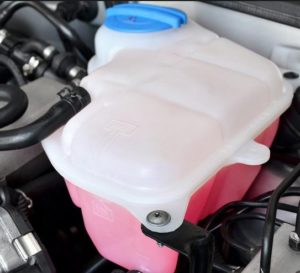
Check coolant level in recervoir
Rent a cooling system pressure tester and check for external leaks
Connect the testing tool to the radiator and pump up the pressure to 15-psi (no higher than that). Then wait. The system should hold that pressure. If the pressure goes down, use flashlight to find the source of the leak.
Coolant is leaking from the pump, is a definite sign of a bad water pump. Drain the cooling system and replace the pump.
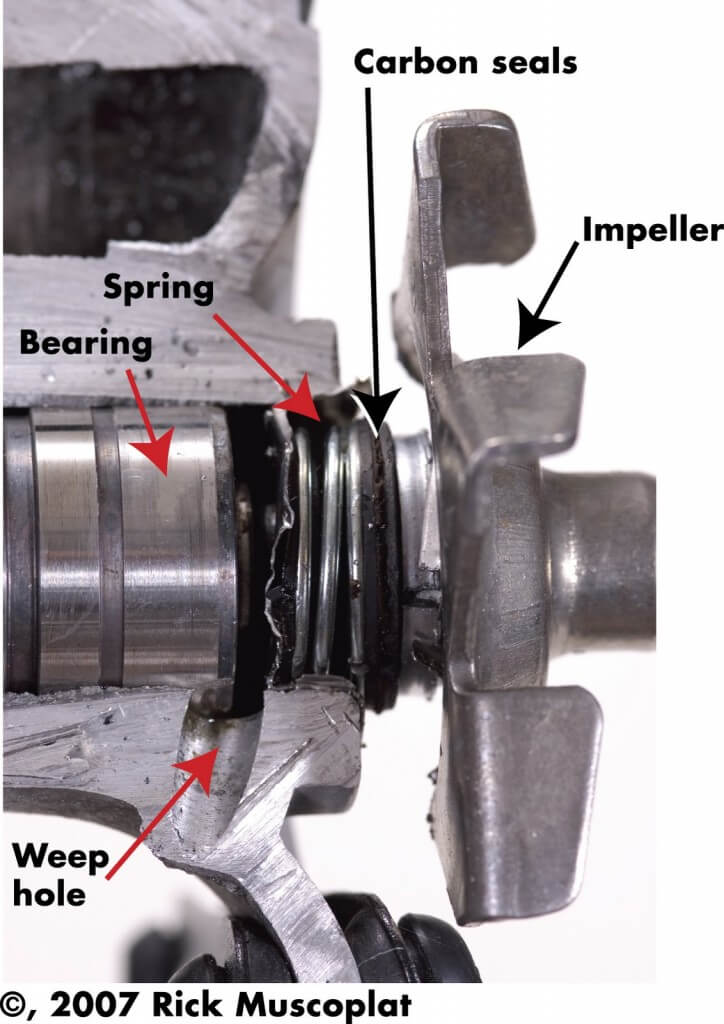
A small amount of coolant from the weep hole is uncommon. However, if you see large amount of coolant coming from either the weep hole or the pump shaft, you have a bad water pump and it must be replaced
Check for coolant flow
If you can’t find any leak but have overheating, check for coolant flow. Simply remove the radiator cap and start the engine. Once the thermostat opens, you should see coolant movement in the radiator. That confirms that the water pump is moving coolant.
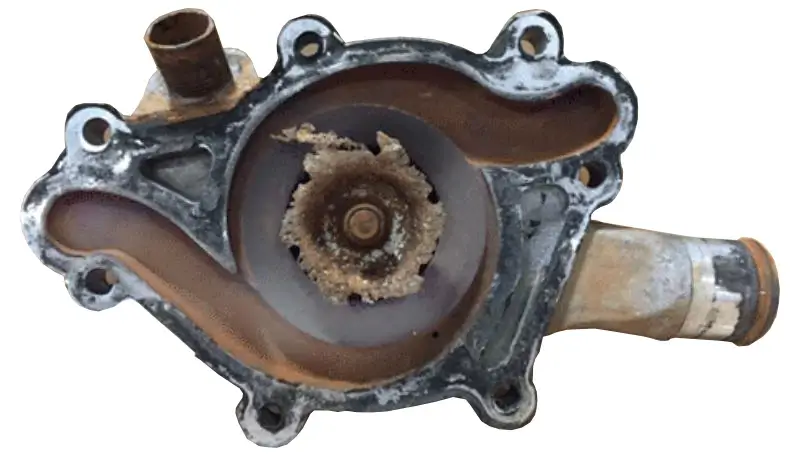
Cavitation is what destroys a water pump impeller. The impeller in this pump is so damaged, it can no longer pump coolant and the engine overheats.
Check for noise around the water pump
A worn water pump bearing will make a growling noise. In the early stages of wear, that noise can be hard to detect without an automotive stethoscope. But by touching the stethoscope probed the water pump bearing area, you can diagnose a bearing issue in an instant.
Lastly, determine the state of your coolant with test strips
Corrosion is the enemy of every cooling system. You use test strips to determine the coolant’s pH. Use a refractometer to determine coolant freeze protection. However, those tests won’t tell you the coolant’s state of anti-corrosion additives. To do that you must perform an electrolysis voltage test with a multi-meter. Find the procedure here.
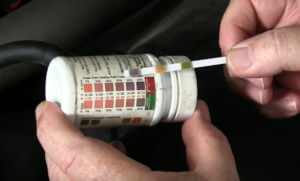
Coolant test strips measure water/coolant ratio, pH.
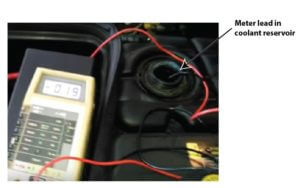
Corrosion can destroy a water pump
Pop the radiator cap and look for signs of
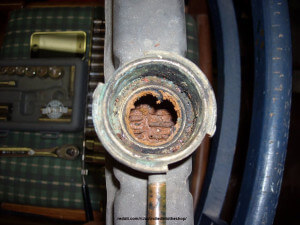
This is what neglect looks like
corrosion inside the radiator. If the system has been neglected and corrosion has begun, chances are high that the water pump has also been damaged.
Water pump replacement tips
If your diagnosis leads you to believe you have a bad water pump and you’re going to replace it yourself, follow these installation tips:
1) ALWAYS flush the entire cooling system before you remove the old pump. Do be stupid here. It makes no sense to swap a new pump into a dirty corroded cooling system. Flush it first. Then remove the old pump and swap in the new one.
2) NEVER rotate the shaft of a new water pump when the pump is dry. You can damage the seals even before you install it by rotating the shaft against dry seals. The seals require coolant as a lubricant.
3) Watch that sealer! Whoa dude, did the shop manual really call for RTV sealant? Adding an RTV sealer may sound benign enough, but using RTV sealer when you don’t need it can cause all kinds of problems down the road. Follow these rules about gasket sealing:
• If the water pump comes with a paper gasket it doesn’t need sealant Period. The end
• If the water pump comes with a silicone gasket, it doesn’t need sealant unless specified in the instructions.
• If the water pump doesn’t come with a gasket or no gasket is listed for your application, THEN you should use and RTV gasket maker (like the RIGHT STUFF by Permatex).
• ALWAYS, always always use a torque wrench when tightening bolts. Water pump housings are made from a soft magnesium material that can warp if not tightened in the proper pattern and torque. Following the tightening sequence shown in the shop manual and use a torque wrench.
• Bleed air out of the system using a vacuum bleeder. Air in the cooling system can quickly destroy the new pump through cavitation.
• Use the recommended coolant when refilling. There is no such thing as “all makes, all models” coolant. Coolant, even dealer coolant is cheap compared to the cost of early radiator, heater core and water pump failure. Use the right coolant.
©, 2019 Rick Muscoplat
Posted on by Rick Muscoplat